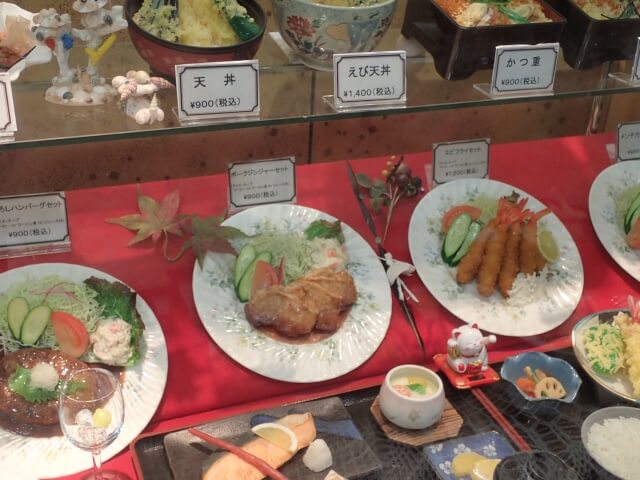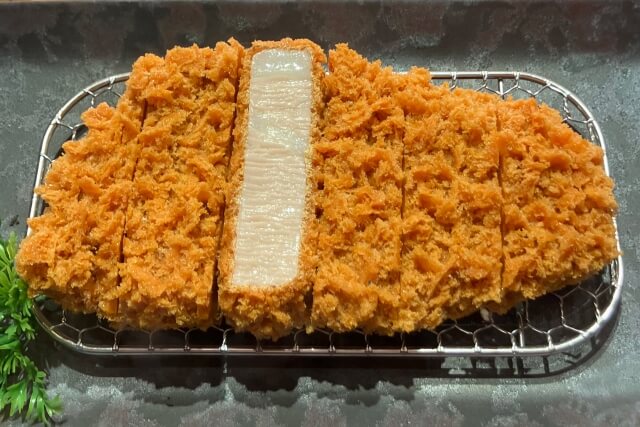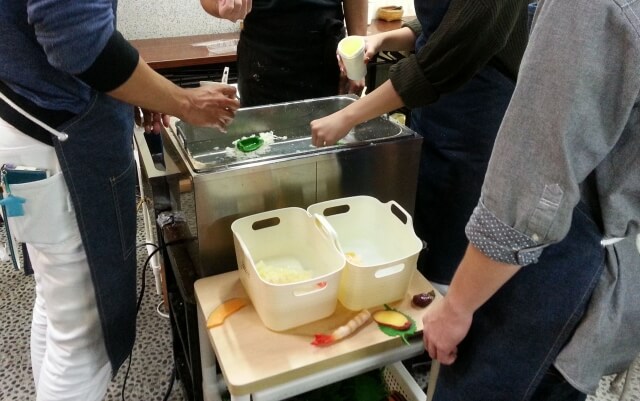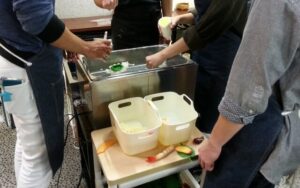Why Did Food Samples Become Popular in Japan?
Food samples or shokuhin sampuru, can be seen showcased outside many restaurants in Japan.
These plastic food samples are a part of modern Japanese culture and are mostly uniquely handmade.
Read on to find out how food samples came to be popularised in Japan and why.
Contents
- What are food samples?
- History of food samples
- Why are food samples so popular in Japan?
- How are food samples made?
- Summary
1. What are food samples?
Food samples are realistic food figurines made from plastic, which are scaled to actual size.
They are a common sight at many restaurants in Japan, whether it’s a family restaurant, cafe, sushi shop or crepe parlour, in which the realistic showcases of food models illustrate a three dimensional view of the menu.
This food sample culture emerged from Japan and has been expanding to this day.
Food samples are also called food replica, fake food, food sampuru, and food model.
As a matter of fact, food samples may be key to customer retention as people may decide where to eat based on the food replicas that they see.
They also help foreign visitors to Japan trying to navigate a menu written entirely in Japanese.
Beyond restaurants, miniature food sample accessories like magnets and keychains are popular as collectibles and souvenirs.

2. History of food samples
Food samples originated more than 100 years ago, around the end of the Taisho period, and it was originally called ryori mokei (food models) at the time.
It originated in a rather suburban area of Gifu prefecture, in a small town called Gujo Hachiman, where over half of Japan’s food samples are made in Gujo to this day.
Apparently, a restaurant in Gujo Hachiman began serving Western-influenced omurice, but with no one having had any clue on what it was, a man named Takizo Iwasaki created food replicas of the omelette rice dish.
Once the model appeared in a department store in Osaka in 1932, the food sample craze was set about.
This was Japan’s first commercialisation of the production and sale of food samples.
To improve efficiency, an ordering system was developed, where samples of the meals were placed outside and people would purchase the corresponding meal ticket.
This increased the sales greatly.

3. Why are food samples so popular in Japan?
There are a few reasons as to why food samples became popular.
First, food samples’ meticulous detail and elaborate handcrafting stimulates the appetite, and has become an irreplaceable part of Japanese restaurants.
We can’t deny that some of us aren’t salivating when we see the food samples.
Not only is it popular in Japan, it is also starting to garner international attention for its incredible craftsmanship and its uniquely Japanese and developing culture.
Entering the realm of art, food samples in recent years have moved beyond the scope of menu promotion to a new form of Japanese expression.
Another reason why it became popular may be in our nature of interpreting information visually, such as emojis and pictograms.
This is especially because Western food culture gained popularity in Japan after the war, and many stores used food samples to enhance the visual appeal and recognition of foreign dishes which were unfamiliar to the population at the time.

4. How are food samples made? How were they made before?
Many food samples are mostly handcrafted.
This is to ensure that the food samples look as tempting and exciting as possible.
For a little playfulness, some samples have a fork hovering over a plate of pasta, and chopsticks lifting soba noodles from a bamboo tray.
The process of making food samples goes through four steps: mould-making, casting, colouring, and presentation, most of which are manual processes.
As a result of painstaking detail, these samples cost much higher than the actual dishes that they represent, so a restaurant could spend thousands of dollars on a single display.
For a more detailed explanation on how food samples are made, read our blog article on How to Make Food Samples!
The original food samples were made with wax since they were malleable and easily sourced.
Around 1990, the paraffin wax samples began to be made of more durable polyvinyl chloride, silicon and gelatin, which enabled the samples to look more realistic.

5. Summary
So there you have it.
Food samples form a part of Japanese food culture, from its great replication and its presence at many restaurants.
If you are interested in making a food sample of your own, why not visit our Food Sample Making Cafe at Asakusa, Tokyo and experience Japanese culture with us!
What are we?
We run Food Sample Making Cafe at Asakusa, Tokyo in Japan.
Here you can immerse yourself in Japanese culture through experiencing food sample making.
We will carefully teach you how to make authentic, professional-grade food samples, so everyone from adults to children can enjoy it!
Your food sample will be completed in about an hour, and you can take it home right away.
The cafe is an indoor interactive zone, so it is recommended for sightseeing on rainy or hot/cold days.
If you want to try making food samples of your own, why not join us?
Reservations can be made here.
Unauthorized copying and replication of the contents of this site, text and images are strictly prohibited.

